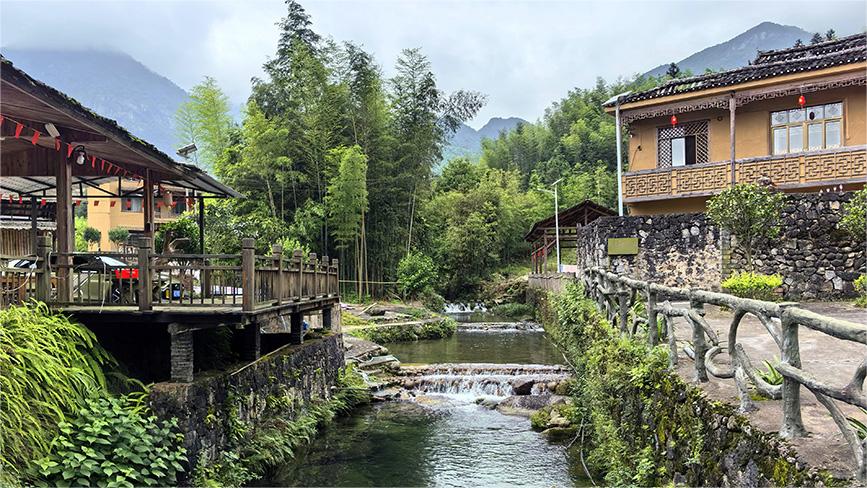Letter from Lhasa: Witnessing the rebirth of an isolated plateau county
LHASA, Aug. 27 (Xinhua) -- As I made my way into Medog County, southwest China's Xizang Autonomous Region, the humid air and the lush banana trees lining the road made me feel like I was traversing a tropical rainforest. It wasn't until I caught sight of the distant snow-capped mountains that I was reminded of where I truly was.
Medog sits at an average altitude of 1,200 meters, with a humid climate and abundant rainfall. It is located in a deep valley in the Himalayas, besieged by high hills and primitive forests, and once cut off from the outside world.
That all changed in October 2013, when a highway connecting Medog to the outside world was finally completed, breaking the county's long-standing isolation.
Before arriving in Medog, I didn't have high hopes for the region's development. My colleagues had told me that the local population mainly consisted of the Monba and Lhoba ethnic minorities, both the smallest ethnic groups in China.
Before the peaceful liberation of Xizang in 1951, many people here lived in a primitive tribal society, with slash-and-burn cultivation and slow development.
However, when I arrived in the town, I was greeted by a series of pleasant surprises.
The town was equipped with modern amenities, and there was even an ecological park at its center. I saw Tesla and NIO electric vehicles gliding down well-paved roads, and a beautifully designed library standing out in the skyline. On the second floor of the library, I could brew a pot of locally grown tea and sit by the window, taking in the misty, dreamlike scenery.
I was also invited to visit a local tea garden, and the sight there left me even more in awe. The terraced tea fields cascaded down the mountainsides, embraced by the surrounding peaks. Tourists flocked to capture photos of the breathtaking landscape and even tried their hands at tea picking and processing. Nearby, a blogger was live-streaming the beauty of the area to online viewers.
The rapid pace of development here astonished me. A local official explained that the progress was due in large part to the pairing-up assistance.
In 1994, the central government made a strategic decision to rally national support for Xizang. Under the policy of pairing-up assistance, some central state organs, provincial-level regions and centrally administered state-owned enterprises were designated to assist in specific areas of Xizang, injecting strong impetus into the development of the plateau region.
Over the past 30 years, ten batches of assistance teams from relatively developed coastal Fujian and Guangdong provinces have brought talents, technology, resources and funding to Medog.
In 2011, the assistance team found that the climate here was ideal for tea planting. By 2013, tea cultivation had spread throughout the county. With the opening of the highway, the region's development shifted into high gear.
Currently, there are 103 organic tea gardens spanning over 1,266 hectares in Medog. In the first half of this year, the income from tea leaves in Medog County exceeded 8.37 million yuan (about 1.18 million U.S. dollars), while the tea industry generated an additional value of over 40 million yuan, according to official data.
In the meantime, thanks to the Guangdong assistance team, the county's infrastructures, including rural roads, schools and healthcare facilities, has greatly improved.
My new friend Tashi, a Lhoba and once a hunter from a local village, now no longer hunts. He has become a forest ranger. He also runs a rural eatery and picks tea leaves, making a total annual income of approximately 100,000 yuan.
"In the past, we lived like animals, lacking access to healthcare and education. Today, things have changed. And I know it will be even better," Tashi told me.
I can't wait to see what new surprises Medog has in store for me the next time I visit.
Photos
Related Stories
Copyright © 2024 People's Daily Online. All Rights Reserved.









